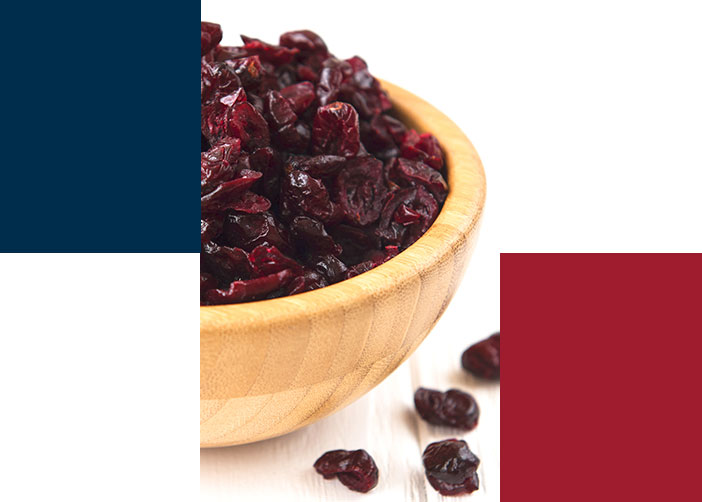
US Cranberries
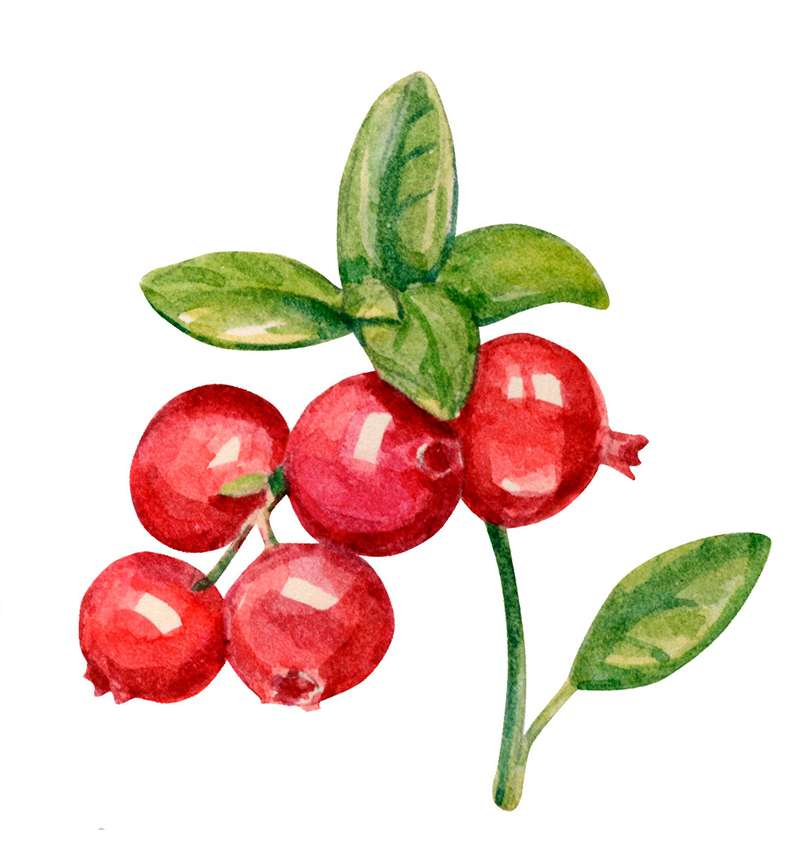
America's Original Superfruit ®
Native Americans used cranberries as a staple as early as 1550. They ate cranberries fresh, ground, or mashed with cornmeal and baked into bread. They also mixed cranberries with wild game and melted fat to form pemmican, a survival ration for the winter months. Maple sugar or honey was used to sweeten the berry’s tangy flavor.
By 1620, Pilgrims learned how to use cranberries from the Native Americans. There are several theories of how the berry was named. Germany and Dutch settlers named the berry “crane-berry” because it appeared to be the favorite food of cranes or the blossom resembles the head and neck of an English crane. Eventually “crane-berry” was shortened to cranberry. By 1683, cranberry juice was made by the settlers.
The historic uses of cranberries are extensive. American whalers and mariners carried cranberries on board to prevent scurvy. Native Americans brewed cranberry poultices to draw poison from arrow wounds, used cranberry in tea to calm nerves, as well as using the juice as a dye for fabrics.
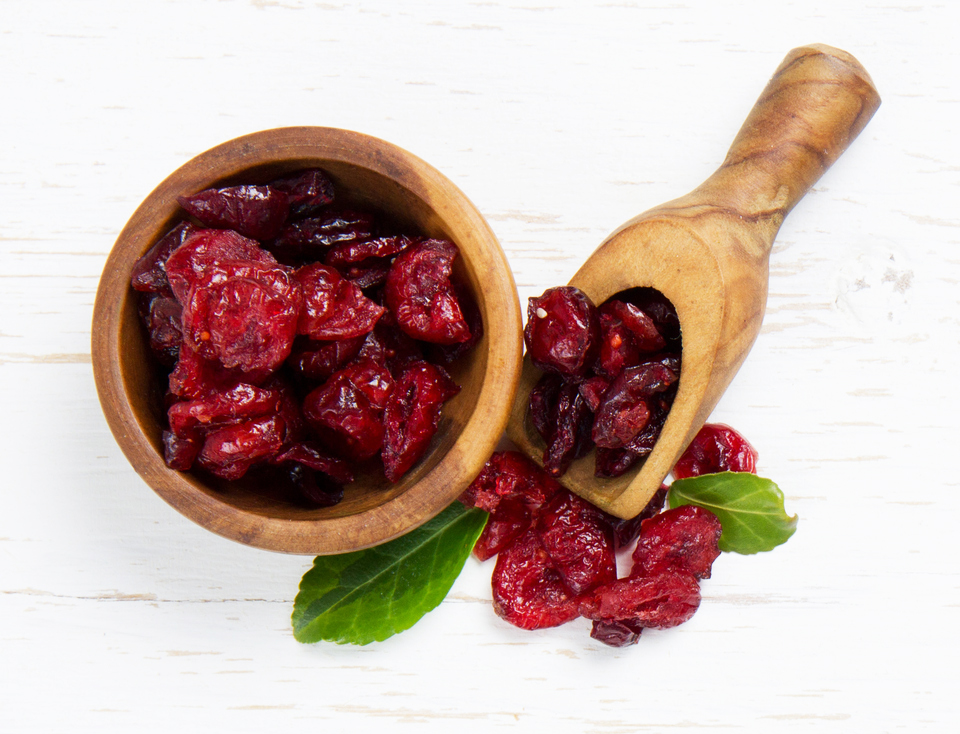
Cultivation
Growing & Harvest
Cranberries grow on low-lying vines in impermeable beds layered with sand, peat, gravel and clay. These beds are known as “bogs” or “marshes” and were originally created by glacial deposits. Commercial bogs use a system of wetlands, uplands, ditches, flumes, ponds and other water bodies that provide a natural habitat for a variety of plant and animal life. Cranberries are harvested in the fall, generally from mid-September through mid-November.
Winter
Bogs and marshes are flooded to create a layer of ice that protects vines from harsh weather. The ice also allows for sanding of the beds, which stimulates growth when the ice melts.
Spring
Bogs and marshes are drained and blossoms appear for bees to pollinate. Growers monitor for frost and insects.
Summer
Petals fall from the flowers, leaving small green nodes that will turn into cranberries. Growers irrigate as necessary and monitor fruit quality.
Fall
Berries achieve size and color and are harvested using wet or dry methods. Beds begin to go dormant after harvest and growers begin off-season maintenance work.
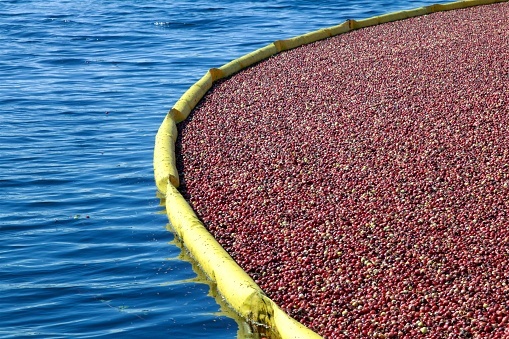
Wet Harvest
Most cranberries are wet harvested when growers flood their bogs and use harvesting machines that loosen the cranberries from the vine. Four air chambers in the cranberry’s center allows it to float to the water’s surface. The berries are then corralled and transferred to a truck for transport.
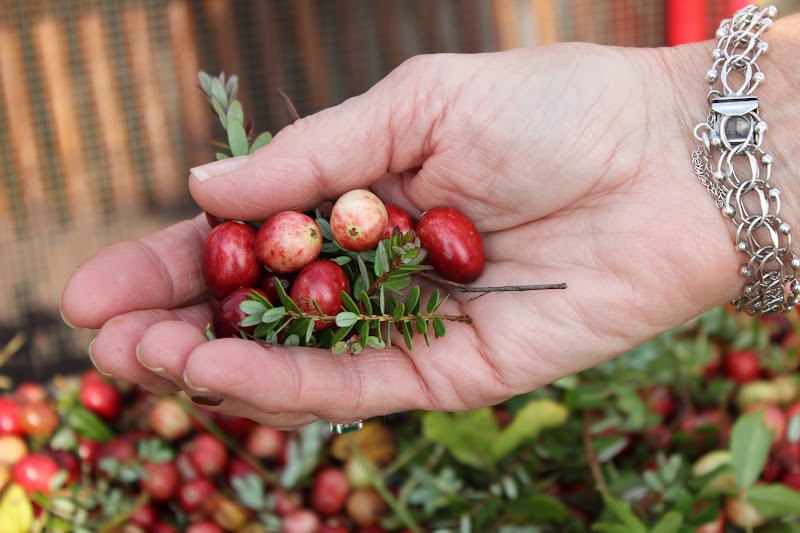
Dry Harvest
While only a small percentage of cranberries are dry harvested, the process can be done by hand or using mechanical pickers resembling lawn mowers with comb-like conveyor belts that carry the berries to attached burlap bags.
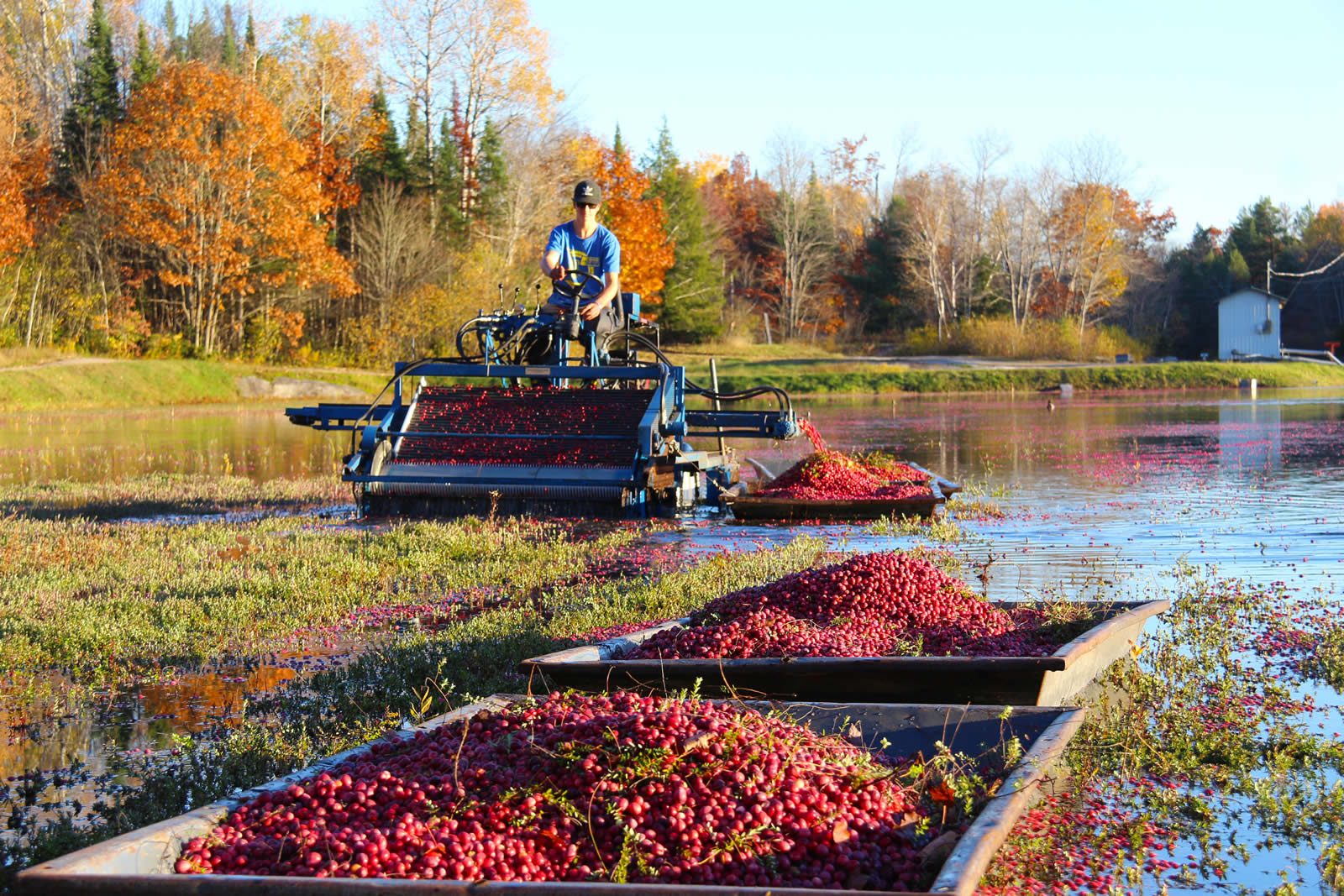
Cranberry Bogs & Marshes
Cranberries are grown throughout the northern part of the United States – Wisconsin, Massachusetts, Oregon, New Jersey and Washington primarily. These areas offer the special conditions that cranberries require including sandy soil, abundant fresh water and a growing season from May to October. Wisconsin grows approximately 61% of the cranberries in the US while Massachusetts accounts for another 26%. New Jersey, Oregon and Washington state combine to make up the remaining 13%.
FAQs
